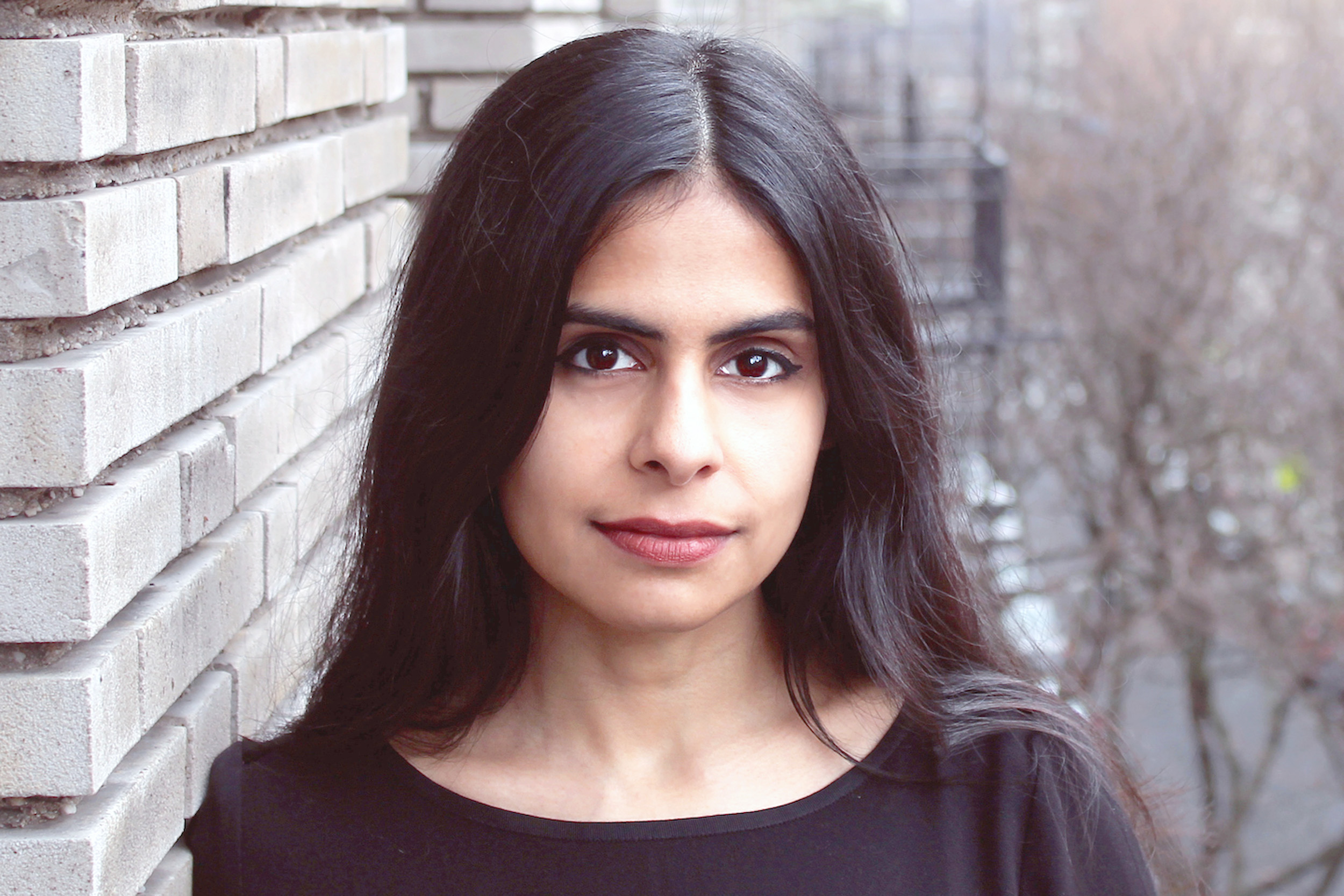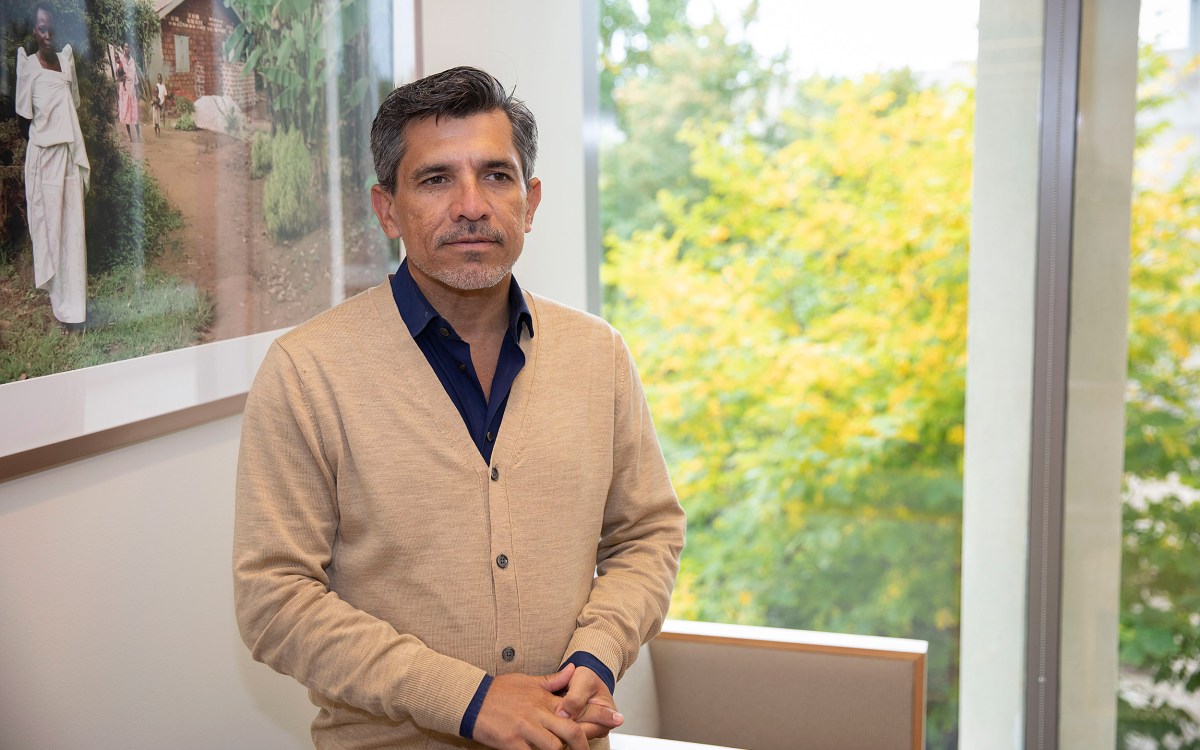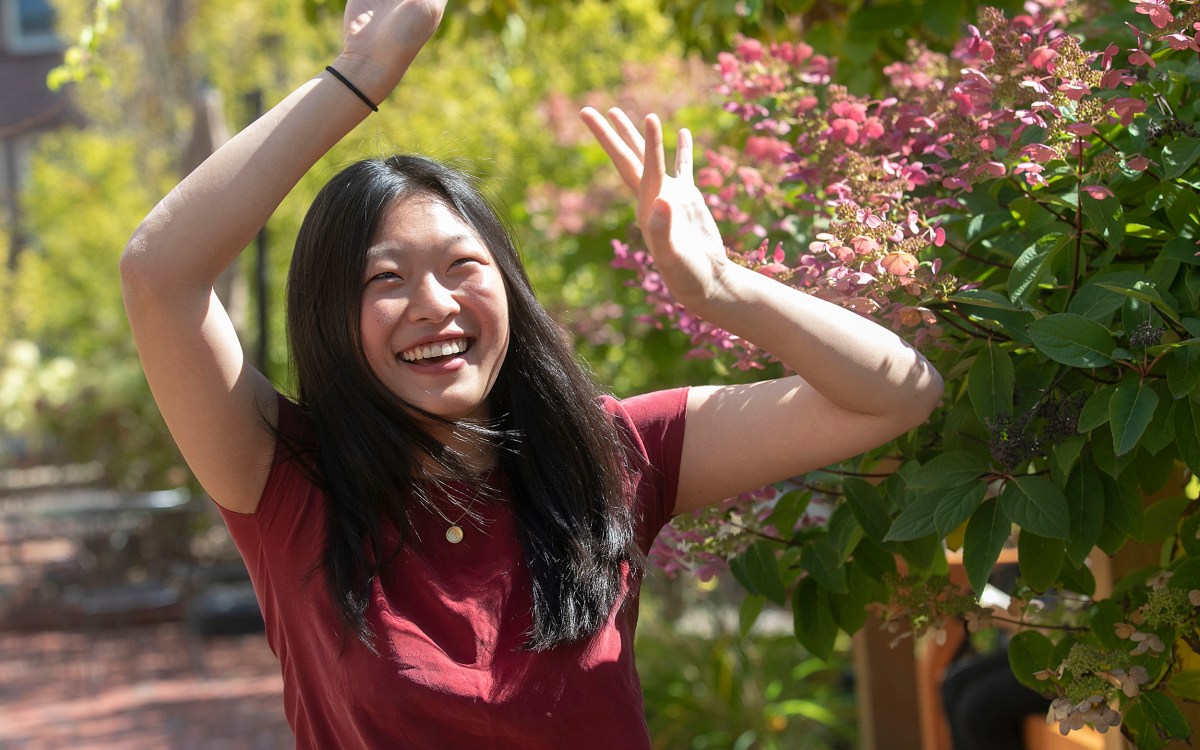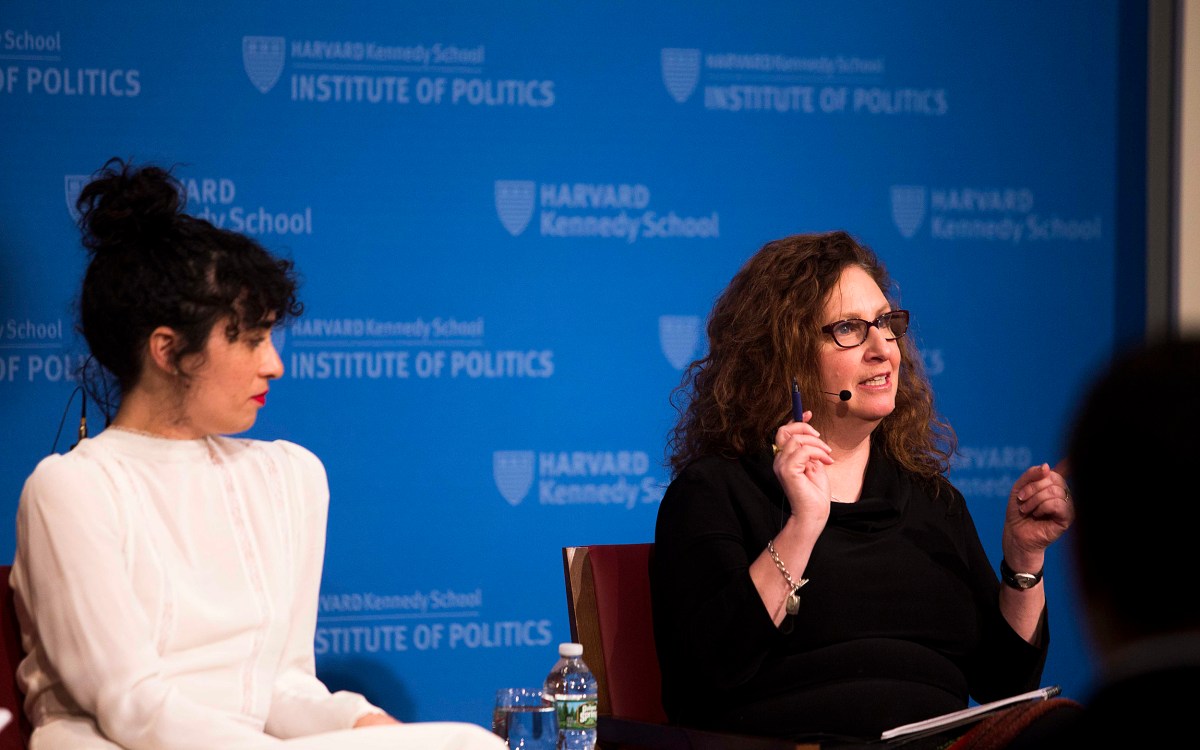
Photo courtesy of Durba Mitra
‘Indian Sex Life’ and the control of women
Research, personal story frame professor’s new book
The intellectual questions Durba Mitra asks are formed as much from her archival research as from her conversations with women on their experiences of social judgment and subordination and their efforts to challenge strict social norms. Perhaps no one has influenced her more than her own mother, who was open with Mitra, assistant professor of Studies of Women, Gender, and Sexuality and Carol K. Pforzheimer Assistant Professor at the Radcliffe Institute, about the unique challenges of being an independent woman in a world that, too often, has little space for independent women. “Many communities have all sorts of expectations about women and young girls, about looks, about how one is supposed to comport oneself in a room, about how to be appropriate, about how deferential we are supposed to be. My mother was always very clear to me. There’s no deference to be had,” said Mitra, who recently published “Indian Sex Life: Sexuality and the Colonial Origins of Modern Social Thought.”
Q&A
Durba Mitra
GAZETTE: You conceived this book from an academic place as well as a personal one. Can you speak about both?
MITRA: I was pre-med in college, but also a history major, and I was interested in the history of science and medicine. For my senior thesis, I wrote about the history of prostitution and women’s sexuality, and I found there was a feminist literature that could help me understand how to think about women’s sexuality historically. When I decided not to go to medical school I went to graduate school thinking that I would study this history of science and medicine, but ended up doing interdisciplinary feminist and queer studies. In the introduction to “Indian Sex Life,” I narrate how I went into archives thinking that I was looking for one kind of history: the social history of the many kinds of women who became prostitutes. What I found, instead, was that the word “prostitute” appeared across diverse archives that seemingly had nothing to do with prostitution, whether it was about laws around abortion and infanticide or sociological theories about social evolution and the conceptual visions of men who sought to create an ideal society based on patriarchal monogamy. I realized that my project and questions had to look different than I had initially imagined them. So that’s how I came to the book as an intellectual history of sexuality, a history of how ideas of women’s sexuality have been foundational to how we study modern society. The questions were rooted in the thinking about science and epistemology, but really the burning question was: How do we think about the ubiquity of women’s sexuality in the study of the past and futures of our societies? How have often deeply troubling ideas about the control and erasure of women’s sexuality shaped modern social theory?
The more personal story in this project comes from my experience growing up in a household with a single mother. I’m of South Asian descent and am first generation in the U.S. My experience of having a mother who was divorced made me realize that many of my intellectual questions come from experiences observing women who do not fit into socially normative roles, including my mother, who is this amazingly defiant person. She has accomplished a huge amount, a single mother to two children who got her Ph.D. while working full time as a professor for years. She moved her family across the world and eventually settled in Fargo, N.D. She often had more than one job to make ends meet. That early experience transformed me and made me deeply committed to thinking with women about their perspectives and shared forms of knowledge. I remember when I did my first year of fieldwork, standing with a woman in a kitchen, and she was talking about the kinds of herbs women commonly used to prevent pregnancy. These knowledges and practices, or remedies, were exchanged to create a shared knowledge about how to have control over their own reproduction. It’s the kind of shared knowledge that exists only between women. I realized that even though I would look at a document in an archive that told me one type of story, that through these kinds of conversations I could ask other kinds of historical questions and use historical methods of reading. So when I later read colonial textbook after colonial textbook that used condemnatory language to describe women’s health practices, I had these other structures of knowledge that helped me critically read outside the logic of deeply patriarchal, and often racist colonial ideas of Indian women.
This project is very much centered in the colonial period. It ends at the end of colonialism in the 1940s, but the reach of the project is much broader, and I feel it resonates with urgent issues today. What does it mean to write a history of the present conditions of sexual control and violence that endure, where the erasure of women’s desires and sexuality continues to be seen as a natural and inevitable fact of everyday life in postcolonial societies? Over diverse archives, from studies of ancient society to criminal law to forensic medicine, a wide range of women from all walks of life were classified as prostitutes. The idea of the prostitute was everywhere. Its ubiquity made me realize that something systematic was occurring, something that we had not yet accounted for. I had to shift my work to study intellectual concepts that shaped these ideas, not just particular women who were marginalized. There was a systemic issue at play. And I found in interdisciplinary feminist and queer studies the innovative methods of reading and analysis that I needed to write this urgent history.
GAZETTE: How did you come to find your way intellectually from your mother?
“As a woman, I was constantly asked why I was conducting research on such ‘distasteful topics,’ and limited access to archives made my experience of telling this story fragmented, with sudden starts and stops.”
MITRA: I’m very much shaped by her intellectually. She’s a statistician. Interestingly, I find that the principles of her discipline have shaped so much of what I study, how we write about and study modern societies. So, in my own work, I look at how modern social theory studies social deviation, how correlation is a key concern in the comparative study of civilizations, and how modern societies create social norms around sexuality and marriage.
It took a lot of defiance on my mother’s part for her to live the life that she does, but also to let me be the person that I am. Many communities have all sorts of expectations about women and young girls, about looks, about how one is supposed to comport oneself in a room, about how to be appropriate, how deferential we are supposed to be. My mother was always very clear to me. There’s no deference to be had. Your job is to be a leader. Your job is to be an ethical person, to ask critical questions, to challenge social expectations that see you as secondary to men. That is what she was doing every day. But she is also deeply informed by her own history, her own training, her own life experiences. She is a great chef of Bengali cuisine. She practices very intricate forms of embroidery and artwork that she has learned since she was a little girl. So she also exceled at more gendered, less socially recognized forms of labor and artistic practice. The other side of this life was that I saw her experience very painful acts of social exclusion. It was quite unusual to be a divorced woman in the South Asian diaspora in the 1970s and 1980s. That experience of social exclusion made me defiant. As a prominent scholar once said to me, “You almost have to be outside inside to be able to write a book that critiques society for the kind of foundational exclusions that are part of the way it imagines itself.” I believe my work is deeply informed by that insider-outsider perspective.
GAZETTE: Can you talk about the women you found in your archival discoveries?
MITRA: It took a long time to resolve how to tell this story, because what I thought would be individual stories of women turned into a much more abstract, much more conceptual history about the ubiquity of ideas of female sexuality that have organized how we study society. For example, in the chapter “Circularity” on the forensics of abortion, I start with a story from an official colonial archive, a coroner’s report, which tells us about a woman — a girl, really — who was widowed in adolescence, who dies of an alleged abortion after getting pregnant despite being unmarried. What I play out for the reader in the telling of that story is that there was no way to reassemble her life except from a report that was about her death. What does it mean to narrate a life from a report that was about death? What can we know about her life from a deeply sanitized report about a woman’s body at the time of her death? How can we think about the social exclusion that woman may have experienced, imagine a world that left her to be alone in her death, but also account for the structures of knowledge that only recorded women when they died, but had no interest in documenting them when they were alive?
This is the work of feminist and queer scholarship. I didn’t ever fully know how to tell this story until really after I completed my Ph.D., and I realized that the story I wanted to tell wasn’t simply about the individual fragment of this life, but about the ubiquity of a concept of deviant female sexuality that allowed for this archive to record this death, not as one of compassion, but through the language of a woman’s criminal intent. I wanted to account for how this archive organized how we understood society, and the limits of the histories we can tell from these official perspectives.
“Many communities have all sorts of expectations about women and young girls… My mother was always very clear to me. There’s no deference to be had.”
While my book “Indian Sex Life” is based on the empirical study of India, I don’t think it is unique to Indian society, or solely a study of one region of the world. As a scholar trained in gender and sexuality in South Asia and the comparative colonial and postcolonial world, what I am interested in is how the colonial world has been critical to how we study modern society across the world, how histories of colonial gender and sexuality have more broadly informed modern disciplines of social science.
GAZETTE: What were the challenges and what did it mean emotionally to confront these archival stories as such fragmented puzzles? What kind of feelings of responsibility come with that?
MITRA: It is a challenging project, one where I feel a deep sense of ethical responsibility to the histories I am telling.The death certificate of this woman’s life, the story of her body that is dissected, that is the only version of the story that I get of her. What does it mean to narrate this document? What are the ethics of confronting such an archive? Emotionally, this is where, in my view, feminist and queer studies do critical work to think of the limits of such archives. These fields offer powerful, essential forms of knowledge, because scholars of gender and sexuality ask questions about the affective dimensions of social and political life while also challenging ideologies that have made social exclusion seem natural and normal. I am influenced by these fields of study, including postcolonial and transnational feminisms, black feminist studies, and queer studies, which ask questions about how we deal with these fragmented archives and write fragmented lives.
For me, as a researcher, I think of this fragmentation in a few ways. First, my archives are not only fragmented in terms of the lives of people and how they appear in archives, but they are quite literally fragmented and scattered across the world as a result of the unequal project of the acquisition of knowledge that results from colonialism. This kind of project requires research in spaces you don’t anticipate you will go to find the materials you hope to find. So a lot of my materials about India were moved out of Indian libraries or archives to other places as a result of colonial structures of knowledge of where people and libraries in the metropole moved documents thousands of miles. Anyone working on India’s colonial period has to go to the British Library. You spend a lot of time in London, as well as in national and local archives across South Asia, but you may also end up in the Netherlands, or in Washington, D.C., at the Library of Congress. For my book, Widener Library has perhaps the most extraordinary collection of sources, including first editions of colonial ethnographies. There are these amazing books because of the preservation conditions. These materials are often better-preserved here than they might be elsewhere. But for me, there are ethical questions we must ask. What does it mean to find an account of an Indian woman’s autopsy in a medical library in London or New York, totally moved from the place of its production? Sometimes it means that we can only read the source out of context, far from the place it describes. When an undergraduate student checks that same book out from Widener, they don’t know why it is there. It bears no material marking of its long history of travel across the world as part of colonial circulation of documents, as part of state-sponsored programs of knowledge acquisition. Indeed, the title of my book comes from dozens of books that were circulated across the globe from the colonial and postcolonial world. They carry titles like “Indian Sex Life” and “Sex Life and Prostitution in India.”
The other key issue in this history of fragmentation is the particular challenges of being a woman researcher. There are always challenges to doing research alone, and I am very cognizant of it. It certainly shaped my experiences traveling across archives and geographies to gain access to critical sources that form the foundation of my book. I was often refused access to libraries and archives. As a woman, I was constantly asked why I was conducting research on such “distasteful topics,” and limited access to archives made my experience of telling this story fragmented, with sudden starts and stops. As a teacher and adviser, I try to advise my own students, including women, students of color, women of color, and queer students, about the unique challenges marginalized people face conducting archival and ethnographic research. There are starting to be more conversations about how we conduct research safely and effectively as minorities, women, queer people, transgender people, but we need to talk about it more, and we need programming that creates a sustained conversation about these issues to help train students.
GAZETTE: How does this all translate to the classroom, and what you are teaching?
MITRA: This semester I taught a course directly on my research from my first book called “The Sexual Life of Colonialism.” This course is based in the colonial/postcolonial world. It focuses on diverse geographies, including South Asia, Southeast Asia, Middle East, and sub-Saharan Africa, and it looks at questions of same-sex sexuality, interracial sexuality, queer sexuality, transgender politics, and rights in those spaces and questions of disability. The other course I taught was “Solidarity: Transnational Women’s Rights from Suffrage to NGOs,” which is based on my book project that I’m working on now. My first book is about erasure and control of female sexuality in the making of modern social theory, while my second book moves forward in time to the later part of the 20th century to ask what happens when women take up intellectual life and systematically start to account for the conditions of women’s lives in the decolonizing world. In many ways, this project again circles back to my mother. Women of her generation and one generation before her were the first set of women to get Ph.D.s in the sciences, social sciences, and humanities. So, unlike the colonial period, modern social theory is no longer just men studying women. Instead, with the writings of Third World women, I ask: What kind of radical imaginations do women have for the future of their societies that are more equitable for women?
My “Solidarity” class is part of the Long 19th Amendment Project, which is a Mellon-funded project at the Schlesinger Library. It was meant to be entirely taught in the library as a workshop or laboratory, with discussions and also work with primary materials. After our classroom went remote due to COVID-19, the course moved online, and we used the extraordinary digitized collections of the Schlesinger Library to work together in an online lab setting. I think, despite the challenges of moving to remote teaching, the course was a success because every class we came together to learn together through an encounter with archival objects and think critically about women’s issues, including issues exacerbated by COVID-19, from issues of unequal gendered distribution of housework to the dramatic increase in domestic violence as people stayed at home. The course was experimental, in an exciting way, and really showed how critically important it is to continue to study and teach women’s lives and struggles during this uncertain time.
Interview was lightly edited for clarity and length.







